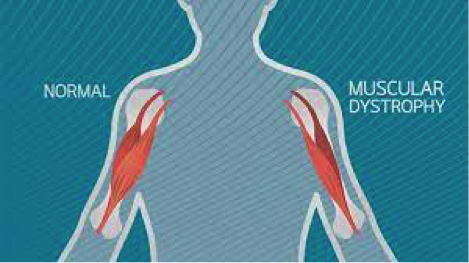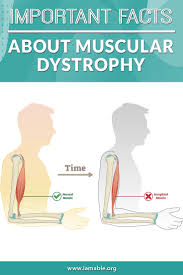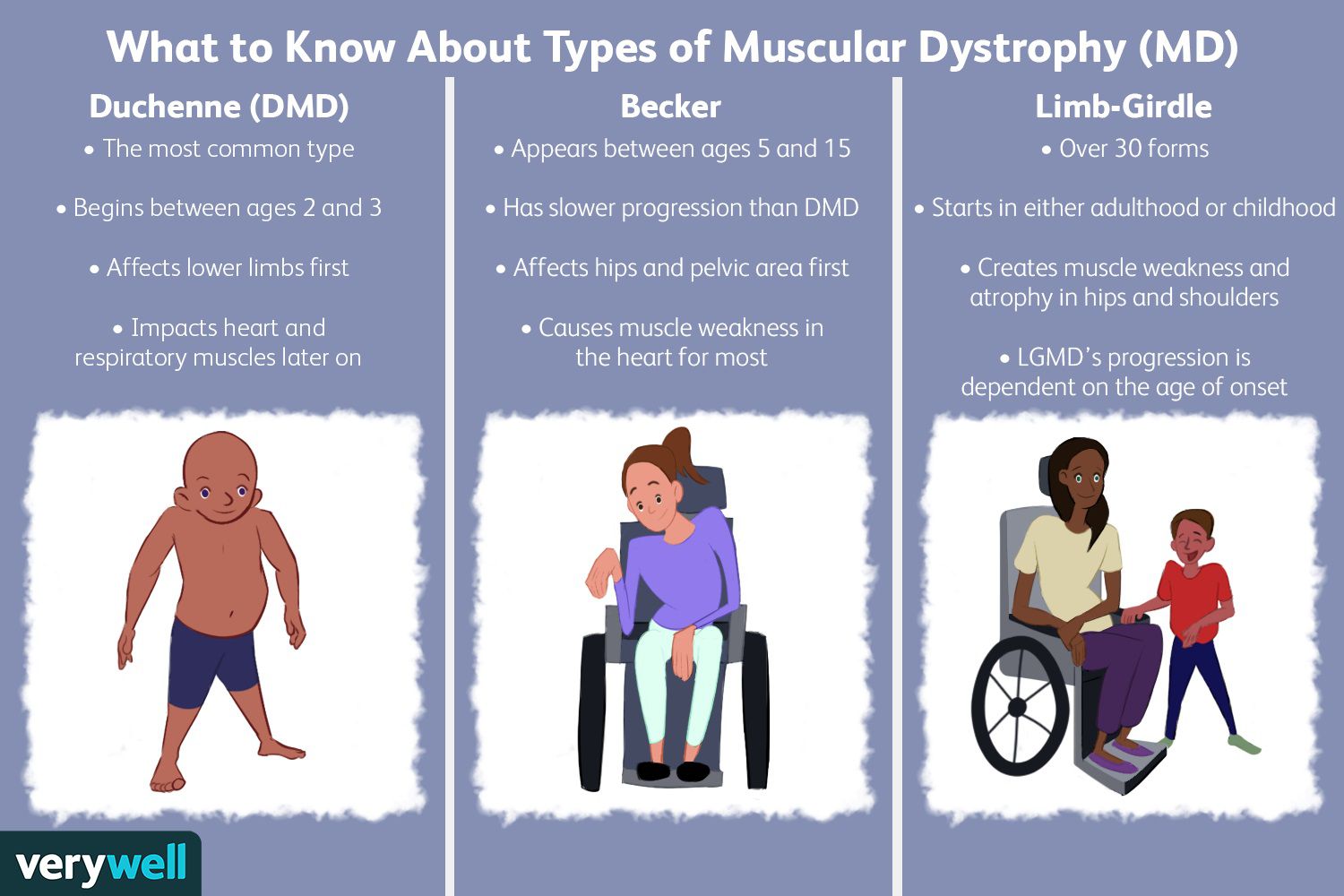




Muscular Dystrophy
Muscular Dystrophy refers to a group of genetic, hereditary muscle diseases that cause progressive muscle weakness.
Muscular Dystrophy is characterized by progressive skeletal muscle weakness, defects in muscle proteins, and the death of muscle cells and tissue.
Types of Muscular dystrophy
Becker`s muscular dystrophy
Becker muscular dystrophy (BMD) is a less severe variant of Duchenne muscular dystrophy and is caused by the production of a truncated, but partially functional form of dystrophin. Survival is usually into middle age.
Congenital muscular dystrophy
Age at onset: birth; symptoms include general muscle weakness and possible joint deformities; disease progresses slowly; shortened life span.
Congenital muscular dystrophy includes several disorders with a range of symptoms. Muscle degeneration may be mild or severe. Problems may be restricted to skeletal muscle, or muscle degeneration may be pair with effects on the brain and other organ systems. Some forms of congenital muscular dystrophy show severe brain malformations, such as lissencephaly and hydrocephalus.
Duchenne muscular dystrophy
Duchenne muscular dystrophy (DMD) is the most common childhood form of muscular dystrophy. DMD usually becomes clinically evident when a child begins walking. Patients typically require a wheelchair by age 10 to 12 and die in their late teens or early 20s. In the early 1990s, researchers identified the gene for the protein dystrophin which, when absent, causes DMD. The dystrophin gene is the largest known gene in humans. Since the gene is on the X-chromosome, this disorder affects primarily males. Females who are carriers have milder symptoms.
EIGHT STAGES OF DUCHENNE MUSCULAR DYSTROPHY:
1. Ambulates with mild waddling gait and lordosis. Climbs stairs and curbs without assistance.
2. Ambulates with moderate waddling gait and lordosis. Needs support to climb stairs and curbs.
3. Ambulates with moderately severe waddling gait and lordosis. Cannot climb stairs or curbs.
4. Ambulates with severe waddling gait and lordosis. Unable to rise from a standard height chair.
5. Wheelchair independence. Sits erect and can roll chair and perform all activities of daily living (ADL) and wheelchair activities without assistance.
6. Wheelchair with dependence. Needs assistance when performing ADL and wheelchair activities.
7. Wheelchair with dependence. Sits erect only with support. Able to do minimal ADL.
8. Bed patient. Needs maximum assistance for ADL.
Distal muscular dystrophy
Distal muscular dystrophies` age at onset: 40 to 60 years; symptoms include weakness and wasting of muscles of the hands, forearms, and lower legs; progress is slow and not life-threatening.
Emery-Dreifuss muscular dystrophy
Age at onset, childhood to early teens. Symptoms include weakness and wasting of shoulder, upper arm, and shin muscles; joint deformities are common; progress is slow; sudden death may occur from cardiac problems.
Facioscapulohumeral muscular dystrophy
Facioscapulohumeral muscular dystrophy (FSHD) initially affects muscles of the face, shoulders, and upper arms with progressive weakness. Symptoms usually develop in the teenage years. Some affected individuals become severely disabled. The pattern of inheritance is autosomal dominant, but the underlying genetic defect is poorly understood.
Limb-girdle muscular dystrophy
Limb-girdle muscular dystrophy`s is also called LGMD. LGMD`s all show a similar distribution of muscle weakness, affecting both upper arms and legs. Many forms of LGMD have been identified, showing different patterns of inheritance. In an autosomal recessive pattern of inheritance, an individual receives two copies of the defective gene, one from each parent. The recessive LGMDs are more frequent than the dominant forms, and usually have childhood or teenage onset. The dominant LGMDs usually show adult onset. Some of the recessive forms have been associated with defects in proteins that make up the dystrophin-glycoprotein complex.
Myotonic muscular dystrophy
Myotonic MD`s age at onset: 20 to 40 years
Myotonic muscular dystrophy is the most common adult form of muscular dystrophy. It is marked by myotonia as well as muscle wasting and weakness. Myotonic dystrophy varies in severity and manifestations and affects many body systems in addition to skeletal muscles, including the heart, endocrine organs, eyes, and gastrointestinal tract. While the exact mechanism of action is not known, this molecular change may interfere with the production of important muscle proteins.
Oculopharyngeal muscular dystrophy
Oculopharyngeal MD`s age at onset: 40 to 70 years; symptoms affect muscles of eyelids, face, and throat followed by pelvic and shoulder muscle weakness, has been attributed to a short repeat expansion in the genome which regulates the translation of some genes into functional proteins.